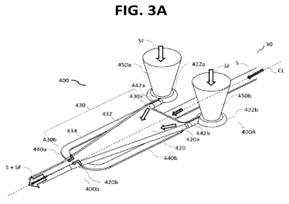The US Court of Appeals for the Federal Circuit affirmed a district court’s denial of a preliminary injunction seeking to bar a petitioner from challenging certain patents at the US Patent & Trademark Office (PTO) because of a forum selection clause in a settlement agreement. The Court found that the patent owner was unlikely to succeed on the merits based on the likelihood of success factor. DexCom, Inc. v. Abbott Diabetes Care, Inc., Case No. 23-1795 (Fed. Cir. Jan. 3, 2024) (Dyk, Hughes, Stoll, JJ.)
DexCom and Abbott are competing manufacturers of continuous glucose monitoring systems. In 2014, the parties entered into a settlement agreement that included a cross-license to certain patents, covenants not to sue or challenge the patents for a “Covenant Period,” and a forum selection clause identifying the US District Court for the District of Delaware as the exclusive jurisdiction “over any dispute arising from or under or relating to [the] Agreement, to the extent permitted by law.” After expiration of the Covenant Period, DexCom sued Abbott in the Western District of Texas. Abbott moved to transfer the case to the District of Delaware and added a breach of contract counterclaim, citing the settlement agreement’s forum selection clause. The case was transferred to Delaware, after which Abbott filed eight petitions for inter partes review (IPR) at the PTO. DexCom responded to the breach of contract counterclaim by alleging that Abbott had breached the forum selection clause by filing the IPR petitions. Until this point, DexCom had consistently taken the position that the asserted claims were not subject to the cross-license, rendering the forum selection clause inapplicable.
Six months after Abbott filed the IPR petitions, DexCom moved for a preliminary injunction prohibiting the IPRs from proceeding. The district court denied the preliminary injunction. In evaluating the four injunctive relief factors (i.e., likelihood of success on the merits, irreparable harm, balance of hardships and public interest), the district court simply assumed the likelihood of success in favor of DexCom. It nevertheless denied the injunction because DexCom waited six months to file the motion (suggesting there was no irreparable harm) and because DexCom had taken inconsistent legal positions with respect to whether the challenged patents were licensed, thus weighing against DexCom in the balance of hardships factor. DexCom sought interlocutory appeal of the district court’s order.
The Federal Circuit focused on the first factor, likelihood of success on the merits. While the district court assumed that this factor favored DexCom, the Federal Circuit disagreed. The Court noted that the agreement required that DexCom and Abbott “shall not Challenge” each other’s patents during the Covenant Period, with the exception that “each Party reserves its rights and is permitted to Challenge any of the patents of the other Party if there is a statute, regulation, or rule that sets a deadline to make the Challenge,” assuming certain conditions were met. The Court first explained that “challenge” includes IPRs of the patents and that nothing in the forum selection clause differentiated between the [...]
Continue Reading
read more

 Subscribe
Subscribe



